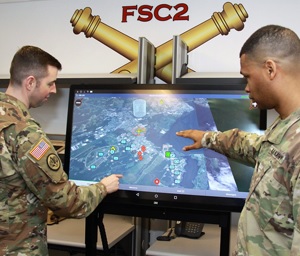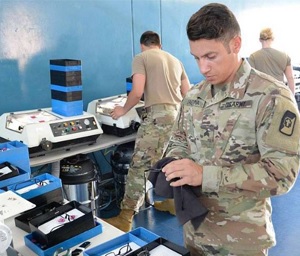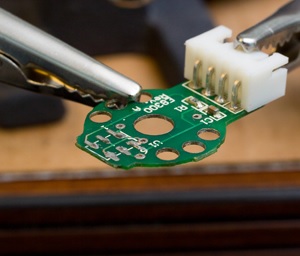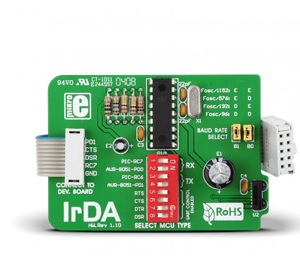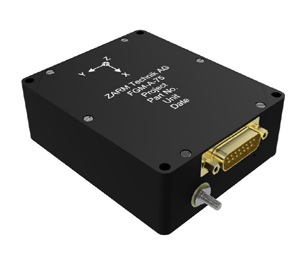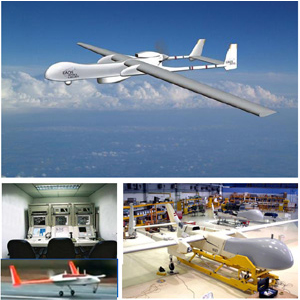Strategic Insights: Precision Optics and Optomechanical Assemblies in Army Applications 20 June 2024
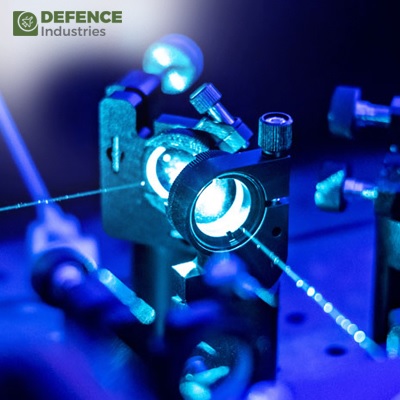
Introduction:
In the modern battlefield, technological advancements play a pivotal role in ensuring the success of military operations. Among these advancements, precision optics and optomechanical assemblies are critical. These precision optics technologies enhance the capabilities of various military applications, including reconnaissance, targeting, and communication. This article explores the strategic insights into the use of precision optics and optomechanical assemblies in army applications, with a focus on key components such as sensor ultrasonic, optical sensors, optical encoder, fiber optic sensor, fiber bragg grating, fiber optic transducer, IRDA transmitter, optical proximity sensor, and geomagnetic sensor.
By leveraging optical engineering, the integration of sensor ultrasonic and optical sensors can greatly improve the performance of military equipment. The use of fiber optic sensor and fiber bragg grating technology enhances the data transmission capabilities, while optical encoders ensure precise positioning. Furthermore, IRDA transmitters facilitate secure communication, and optical proximity sensors enhance detection capabilities. The incorporation of geomagnetic sensors provides valuable data for navigation, making these technologies indispensable in modern military operations.
The Role of Precision Optics in Military Applications
Precision optics involves the design and fabrication of optical components that require high precision and accuracy. In military applications, precision optics is essential for enhancing the performance of various optical systems used in surveillance, targeting, and navigation. Advanced optical sensors developed through optical engineering can detect and identify targets with high accuracy, even in challenging environments. The integration of fiber optic sensors and fiber bragg gratings into military equipment allows for real-time monitoring and data transmission, which is crucial for battlefield situational awareness. Additionally, sensor ultrasonic technology complements precision optics by providing high-frequency measurements, enhancing the detection capabilities of optical sensors. The use of optical encoders ensures precise positioning and movement tracking in military systems. Incorporating a fiber optic transducer further enhances data accuracy and reliability. IRDA transmitters provide secure communication channels, while optical proximity sensors improve object detection and obstacle avoidance. The addition of geomagnetic sensors offers critical data for navigation and positioning, making precision optics a cornerstone of modern military applications. By leveraging these technologies, military operations can achieve superior performance and effectiveness.
Optical Engineering in Military Technology
Optical engineering is the field of study that focuses on the design and application of optical systems and devices. In the context of military technology, optical engineering is vital for developing systems that can withstand harsh conditions and deliver reliable performance. Engineers work on optimizing the design of optical sensors, optical encoders, and other precision optics components to ensure they meet the stringent requirements of military operations. The use of sensor ultrasonic technology enhances the detection capabilities of precision optics systems, providing precise measurements and data analysis. Integrating fiber optic sensors and fiber bragg grating technologies further improves the reliability and accuracy of data transmission. The incorporation of a fiber optic transducer in military systems ensures robust signal conversion and integrity. IRDA transmitters offer secure and efficient communication solutions, essential for military coordination. Optical proximity sensors enhance the detection of nearby objects, crucial for navigation and targeting. Finally, geomagnetic sensors provide valuable data for orientation and positioning, making optical engineering indispensable in modern military technology. By leveraging these advanced technologies, military operations can achieve superior performance and resilience.
Optical Sensors and Their Applications
Optical sensors are devices that convert light into electrical signals, which can then be processed to obtain valuable information. In military applications, optical sensors are used for various purposes, including target detection, range finding, and environmental monitoring. The integration of fiber optic sensors into military systems allows for high-speed data transmission and improved accuracy. Fiber bragg grating sensors, in particular, are used for strain and temperature measurements, which are critical for monitoring the structural health of military vehicles and equipment. By leveraging optical engineering techniques, these precision optics components can be optimized for maximum performance. The use of sensor ultrasonic technology alongside optical sensors enhances detection capabilities by providing precise measurements. Incorporating an optical encoder improves the accuracy of positional data. The addition of a fiber optic transducer ensures robust signal conversion, while IRDA transmitters facilitate secure data communication. Optical proximity sensors are employed to detect nearby objects, essential for navigation and obstacle avoidance. Finally, geomagnetic sensors offer crucial data for orientation and positioning. These advanced precision optics technologies enable military operations to achieve superior performance and reliability.
The Importance of Fiber Optic Technology
Fiber optic sensor technology is a cornerstone of modern military applications. It provides numerous advantages, including high bandwidth, immunity to electromagnetic interference, and the ability to transmit data over long distances. Fiber optic sensors are used in a variety of applications, such as communication systems, navigation aids, and surveillance equipment. The use of fiber optic transducers allows for the conversion of physical quantities, such as pressure and temperature, into optical signals, which can then be transmitted and analyzed. This integration of fiber optic sensors with precision optics and optical engineering enhances the overall performance of military systems. For instance, the combination of sensor ultrasonic technology with fiber optic sensors improves the accuracy of measurements. Optical sensors and optical encoders further contribute to the precision and reliability of data collection. Fiber bragg grating sensors are particularly useful for monitoring structural health, while IRDA transmitters ensure secure communication. The use of optical proximity sensors aids in detecting nearby objects, and geomagnetic sensors provide critical data for navigation. Overall, fiber optic sensor technology, when combined with precision optics and optical engineering, plays a vital role in advancing military capabilities.
Advanced Sensing Technologies
Several advanced sensing technologies are employed in military applications to enhance operational capabilities. Sensor ultrasonic technology, for example, uses high-frequency sound waves to detect objects and measure distances with high precision. This sensor ultrasonic technology is particularly useful in underwater applications, where it can be used for submarine detection and navigation. Precision optics and optical engineering further augment the effectiveness of these systems. Optical sensors are integrated to provide enhanced detection and measurement accuracy. The combination of fiber optic sensors and fiber bragg grating technology ensures reliable data transmission and structural health monitoring. Fiber optic transducers convert physical quantities into optical signals for precise data analysis. Optical encoders offer accurate position feedback, crucial for navigation and targeting. IRDA transmitters facilitate secure communication, while optical proximity sensors detect nearby objects, enhancing situational awareness. Geomagnetic sensors provide vital data for orientation and positioning, making these advanced sensing technologies indispensable in modern military operations. The synergy between sensor ultrasonic technology and precision optics creates robust and highly effective solutions for various military challenges.
Optical Encoders and Their Role
Optical encoders are devices that convert the position or motion of an object into an electrical signal. In military applications, optical encoders are used in various systems, including navigation, targeting, and missile guidance. Optical encoders provide accurate position feedback, which is essential for the precise control of military equipment. The integration of precision optics and optical engineering ensures that optical encoders perform reliably in harsh conditions. Optical sensors play a crucial role in enhancing the functionality of optical encoders, offering improved accuracy and responsiveness. The use of fiber optic sensors and fiber bragg grating technology in conjunction with optical encoders ensures robust data transmission and structural monitoring. Additionally, fiber optic transducers convert physical quantities into optical signals, further enhancing the precision of optical encoders. Sensor ultrasonic technology complements optical encoders by providing high-frequency measurements for better accuracy. IRDA transmitters facilitate secure communication between different components, while optical proximity sensors detect nearby objects, enhancing navigation and targeting capabilities. Geomagnetic sensors provide critical data for orientation and positioning, ensuring that optical encoders contribute effectively to various military operations. By leveraging these advanced technologies, optical encoders play a pivotal role in achieving superior performance and precision in military applications.
Communication Systems and IRDA Transmitters
Reliable communication is crucial in military operations, and IRDA transmitters play a significant role in this regard. IRDA transmitters use infrared light to transmit data wirelessly, offering a secure and efficient means of communication. This technology is used in various military communication systems, including secure data links and remote controls. The integration of IRDA transmitters with precision optics and optical engineering ensures high performance and reliability. Optical sensors enhance the capability of IRDA transmitters by providing precise data for secure transmission. Fiber optic sensors and fiber bragg grating technology enable high-speed and accurate data communication in conjunction with IRDA transmitters. The use of fiber optic transducers further improves the signal conversion process, ensuring robust data integrity. Sensor ultrasonic technology can complement IRDA transmitters by providing additional layers of data accuracy. Optical encoders provide precise positioning information, while optical proximity sensors enhance the detection of nearby objects, crucial for secure and effective communication. Geomagnetic sensors add an extra dimension of data for orientation and positioning, ensuring comprehensive communication solutions. The combination of these advanced technologies with IRDA transmitters ensures reliable and secure communication in military operations.
Proximity and Geomagnetic Sensors
Optical proximity sensors are used in military applications to detect the presence or absence of objects. These optical proximity sensors are essential for automated systems and can be used in various applications, such as perimeter security and equipment safety. Additionally, geomagnetic sensors are used to detect and measure the Earth's magnetic field, providing valuable data for navigation and positioning systems. The integration of sensor ultrasonic technology with optical proximity sensors enhances the detection accuracy and reliability of military systems. By combining precision optics and optical engineering, optical proximity sensors and geomagnetic sensors achieve superior performance. The use of fiber optic sensors and fiber bragg grating technology ensures precise data transmission and structural monitoring. Optical encoders contribute to accurate positioning information, while fiber optic transducers convert physical quantities into optical signals, enhancing the functionality of optical proximity sensors and geomagnetic sensors. IRDA transmitters facilitate secure communication between these components, ensuring seamless integration. The combination of these advanced technologies ensures that optical proximity sensors and geomagnetic sensors provide critical data for military applications, enhancing operational efficiency and safety.
Conclusion:
The integration of precision optics and optomechanical assemblies in army applications significantly enhances the capabilities and effectiveness of military operations. Technologies such as sensor ultrasonic, optical sensors, optical encoders, fiber optic sensors, fiber bragg gratings, fiber optic transducers, IRDA transmitters, optical proximity sensors, and geomagnetic sensors play a crucial role in ensuring the success of these operations. As military technology continues to advance, the importance of precision optics and optomechanical assemblies will only grow, providing new opportunities for innovation and improved performance in the battlefield. By leveraging these advanced technologies, military forces can achieve superior situational awareness, enhanced targeting accuracy, and improved communication capabilities, ultimately leading to more effective and successful missions.



